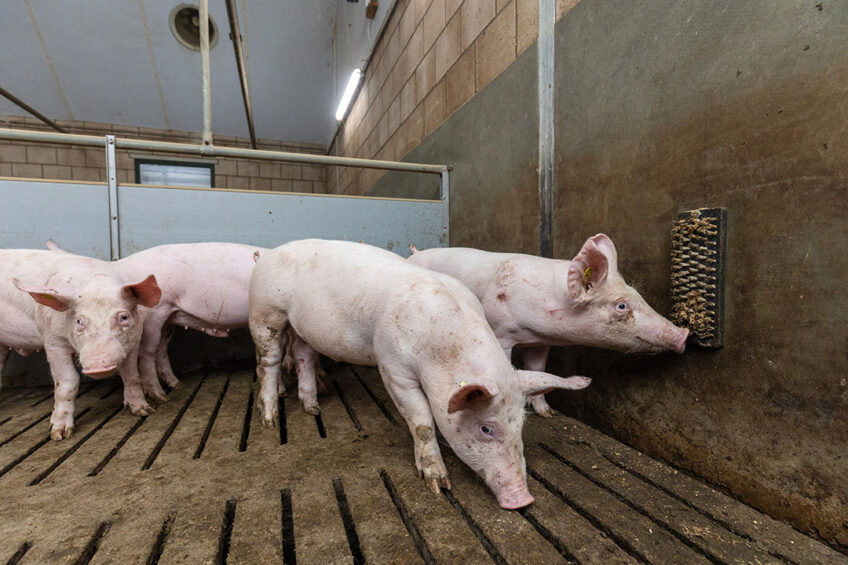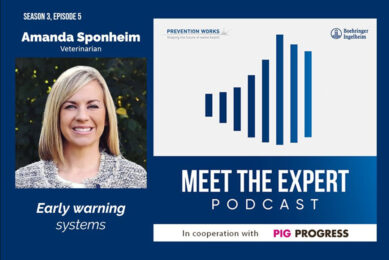Coughing sounds in pigs predict respiratory diseases

Researchers from Chiang Mai University, Thailand recently explained the use of python language to build an audio deep learning recognition system to distinguish and classify coughing sounds in pigs.
Respiratory problems in pigs cause major financial and welfare issues due to increased mortality rates, reduced feed conversion rates, diminished production performance, and increased production costs.
In modern swine production systems, precision technology is applied to distinguish coughing sounds in pigs from other sounds and to classify them. Monitoring coughing sounds in pigs serves as an immediate indicator of respiratory problems. It allows addressing the issue in a more efficient and affordable manner compared to waiting for results from laboratory tests.
Data collection
The research team included 45 healthy weaned piglets (Large White x Landrace x Duroc) in their study. The duration of the study was from the weaning to the fattening period and lasted about 5 months. The researchers recorded coughing sounds with the Voice Recognition Module system. They then analysed the recorded sounds and isolated coughing sounds from all other sounds.
The researchers used python language to create the computer programming code. They classified the recorded sounds according to 3 parameters: wave plot, spectrogram, and log power spectrogram. The team used those parameters to predict the class to which the sound belonged. They calculated the coughing index from the number of coughing bouts, the number of examined pigs and the total time of observation as they relate to incidences of respiratory problems.
The team collected serum, blood, and tonsil swabs every month during the experimental period. They used a commercial enzyme-linked immunosorbent assay to identify antibodies against M. hyo, PRRSv, and PCV2.
Distinguishing pig coughing sounds
Pig coughing sounds differed from the other sounds on the farm based on wave plot, spectrogram, and log power spectrogram. The wave plot, the spectrogram, and log power spectrogram of coughing revealed a stable rhythm of the attitude of sound and time for the coughing sounds but not for the other sounds such as machine sounds, the walking sounds of labourers, and other sounds generated by labourers.
The team determined the coughing index after 8 weeks of age. The pigs displayed high coughing index values, indicating the possible presence of a respiratory problem particularly at 12 to 16 weeks of age. The researchers recorded a positive result of seroprofile for PCV2 at 12 weeks of age. For both M. hyo and PRRSv, they observed the positive results at 4 and 8 weeks of age, and after 16 weeks to 24 weeks of age.
The results of the coughing index correlated with the results of seroprofile of Mycoplasma hyopneumoniae, PRRSv and PCV2
Association of coughing index with seroprofile of respiratory diseases
The team obtained coughing index results at 2, 8, 16, 18, 20 and 24 weeks of age. This indicated that a respiratory problem occurred in pigs at those ages. Pigs between 12 to 16 weeks of age had a higher slope of the sero-conversion. This showed possible infections of M. hyo, PRRSv and PCV2. It also showed secondary infections with pathogens including Pasteurella multocida and Streptococcus suis. Furthermore, the results of the coughing index correlated with the results of seroprofile of M. hyo, PRRSv and PCV2. Positive results of M. hyo and PRRSv were observed after 12 weeks of age. A positive result of PCV2 was furthermore observed after 16 weeks of age.
In the conclusion, the authors wrote that “Coughing is not only an effective way to monitor the presence of a respiratory problem on pig farms, but it can also be correlated with certain respiratory diseases such as M. hyo, PRRSv and PCV2 infections. We hope to promote the use of this system for the early detection of respiratory problems and illnesses on pig farms through syndromic surveillance.”








